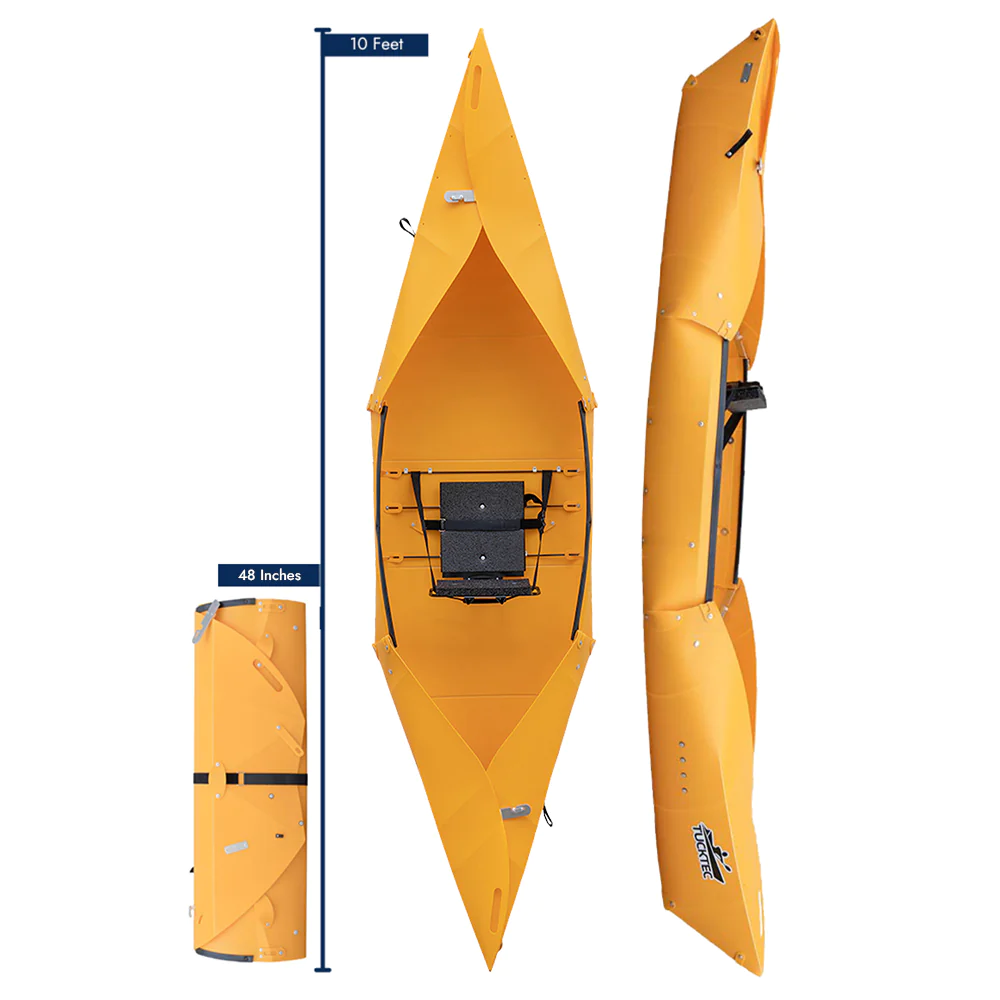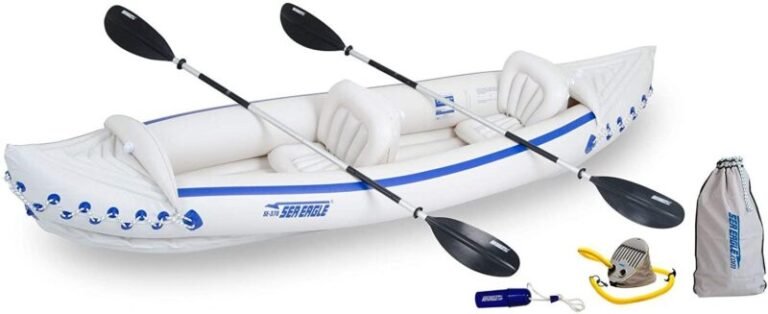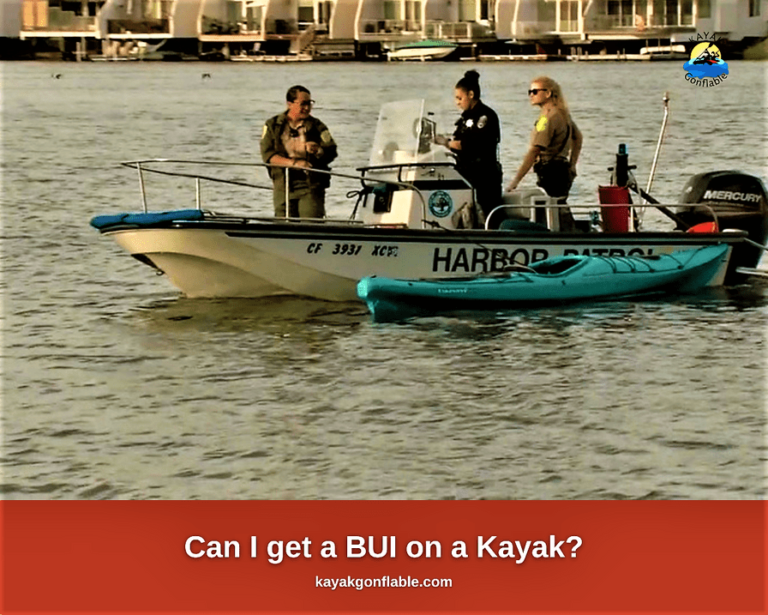Folding vs Inflatable Kayaks

The kayak you choose can significantly impact your overall kayaking experience, safety, and performance while out on the water. Factors such as stability, maneuverability, portability, and durability all play an important role in determining the ideal kayak for your needs.
Faltkajaks
Folding kayaks, also known as collapsible kayaks, consist of a collapsible frame usually made of aluminum, wood, or plastic, covered with a waterproof skin made of durable materials like polyethylene or PVC.
Foldable kayaks were originally developed as military watercraft during World War I and II. After the wars, their design evolved for civilian use.
In the 20th century, companies like Klepper and Folbot began producing Faltkajaks for recreational purposes, solidifying their place in the kayaking world.
Characteristics of Folding Kayaks
- Collapsible Design: They can be disassembled and folded into a compact package, typically resembling a large backpack or suitcase.
- Steifigkeit: Folding kayaks provide a strong and stable platform for paddling, similar to traditional hardshell kayaks.
- Skeg or Rudder: Many folding kayaks come equipped with a skeg or rudder system to aid in tracking and maneuverability.
- Variety of Materials: Folding kayaks come in a variety of materials, with some models utilizing high-quality fabrics and others employing rigid, impact-resistant plastics.
Advantages of Folding Kayaks
- Assembly and Disassembly: While there is a learning curve, assembling and disassembling a Faltkajak becomes more straightforward with practice. The process typically involves connecting frame sections, stretching the skin over the frame, and securing it in place.
- Portabilität: Folding kayaks excel in portability, as they can be broken down into manageable components. Their compact size when disassembled allows for easy transport in a car trunk or even checked as luggage on flights, enabling adventures in remote locations.
- Haltbarkeit: Folding kayaks are often constructed from high-quality materials, ensuring durability and longevity. The combination of a rigid frame and durable skin makes them capable of withstanding various water conditions, including mild whitewater.
- Leistung: Folding kayaks offer exceptional performance characteristics, such as stability and tracking, similar to hardshell kayaks. Their sleek design allows for efficient paddling and maneuverability, making them suitable for both beginners and experienced paddlers.
Disadvantages of Folding Kayaks
- Costs: Folding kayaks tend to be more expensive than aufblasbare Kajaks, primarily due to their advanced materials and construction. The initial investment can be a barrier for budget-conscious buyers.
- Gewicht: The components of folding kayaks can be relatively heavy, especially when compared to aufblasbare Kajaks. Transporting the disassembled kayak to and from the water can be a physical challenge, particularly if there is a long distance involved.
Aufblasbare Kajaks
Ein aufblasbares Kajak, as the name suggests, is a kayak that can be inflated and deflated at will. They are watercraft designed to be lightweight, portable, and inflatable.
They are constructed using durable materials like PVC, Hypalon, or Nitrylon and are typically equipped with multiple air chambers for safety.
Aufblasbare Kajaks have a history that dates back to the early 20th century. They initially gained popularity as military reconnaissance boats during World War II.
After the war, their design evolved for civilian use, particularly for recreational kayaking. Innovations in materials and construction methods have led to the development of modern inflatable kayaks that are durable, stable, and highly versatile.
Characteristics of Inflatable Kayaks
- Lagerung: When deflated, aufblasbare Kajaks can be folded into a compact size, easily fitting into a backpack or car trunk.
- Inflatability: Aufblasbare Kajaks can be quickly inflated and deflated using a pump, making them highly portable.
- Air Chambers: Many inflatable kayaks have multiple air chambers, providing redundancy in case of punctures.
- Variety of Materials: They come in various materials, with high-end models using tough fabrics for enhanced durability.
Vorteile von aufblasbaren Kajaks
- Portability and Storage: Aufblasbare Kajaks are unrivaled in terms of portability. They can be deflated, rolled up, and easily transported in a backpack or car. They are ideal for individuals with limited storage space, as they take up minimal room when not in use.
- Ease of Transportation: Their lightweight design makes it effortless to carry them, even for solo kayakers, and they can be transported on public transportation or even bicycles.
- Vielseitigkeit: Inflatable kayaks are adaptable and can handle various water conditions, from calm lakes to mild whitewater. Some models are equipped with features like skegs or tracking fins to enhance performance.
- Affordability: Inflatable kayaks are generally more affordable than folding or hardshell kayaks, making them accessible to a wide range of budgets.
Disadvantages of Inflatable Kayaks
- Risk of Puncture: Inflatable kayaks are vulnerable to punctures from sharp objects, which can be a concern in rocky or debris-filled waters. However, many manufacturers provide repair kits to address minor punctures.
- Setup and Inflation Time: Preparing an inflatable kayak for the water involves inflating multiple chambers, which can take some time. Although setup becomes quicker with practice, it may be less convenient compared to the rapid deployment of folding or hardshell kayaks.
- Performance Compared to Hardshell Kayaks: While they offer good performance, inflatable kayaks may not match the speed and tracking capabilities of hardshell kayaks.
Folding vs Inflatable Kayaks
Gewichtskapazität
Folding kayaks generally have higher weight capacities and offer more options for gear storage. This makes them suitable for extended trips and activities like camping and touring.
Inflatable kayaks have varying weight capacities, but they may have limited gear storage options. However, some models have additional storage compartments and attachment points for gear.
Stabilität
Folding kayaks excel in stability, providing a solid and secure platform for paddlers. This stability makes them ideal for calm waters like lakes, where smooth cruising and gentle exploration are paramount.
Inflatable kayaks offer good stability but may not match the rock-solid feel of folding kayaks. They still provide a stable experience on calm waters, making them suitable for leisurely paddling.
Speed and Efficiency
Folding kayaks tend to offer better speed and efficiency due to their rigid frames and excellent tracking. They are ideal for those who want to cover longer distances with less effort.
While inflatable kayaks are not as fast as folding kayaks, they still provide a reasonable level of speed and efficiency. High-quality models with good tracking can offer a satisfying paddling experience.
Wendigkeit
Folding kayaks are highly maneuverable in rivers, allowing paddlers to navigate tight turns and obstacles with ease. Their agility makes them suitable for river kayaking, including mild whitewater.
Inflatable kayaks also excel in river kayaking due to their maneuverability. Their lightweight design and responsiveness make them a good choice for navigating river rapids.
Maintenance Tips for Folding Kayaks
- After each use, rinse your folding kayak with fresh water to remove salt, sand, and debris. Use a mild detergent to clean the frame and skin, paying attention to any metal parts susceptible to corrosion.
- Regularly inspect the frame components for signs of wear, rust, or loose connections. Tighten any loose fittings and replace worn-out parts promptly.
- Check the kayak’s skin for punctures, tears, or abrasions. Patch any damaged areas using repair kits provided by the manufacturer.
- When not in use, store your folding kayak in a cool, dry place away from direct sunlight. Proper storage helps prevent UV damage to the skin and frame.
- Lubricate any moving parts or hinges as recommended by the manufacturer. This ensures smooth operation and reduces the risk of corrosion.
Maintenance Tips for Inflatable Kayaks
- After each use, rinse the kayak with fresh water to remove salt, sand, and debris. Pay particular attention to valves and seams.
- Allow the kayak to fully dry before deflating and packing it away. Proper drying helps prevent mold and mildew growth.
- Store the deflated kayak in a cool, dry place away from direct sunlight. Avoid folding it tightly for extended periods, as this can cause creases and damage.
- Inflate the kayak to the manufacturer’s recommended pressure levels. Overinflating can stress the seams while underinflating can affect performance.
- Periodically inspect and clean the kayak’s valves, ensuring they are free from debris and functioning correctly.
Ultimately, the perfect kayak is the one that suits your unique needs and allows you to embark on memorable kayaking adventures.






